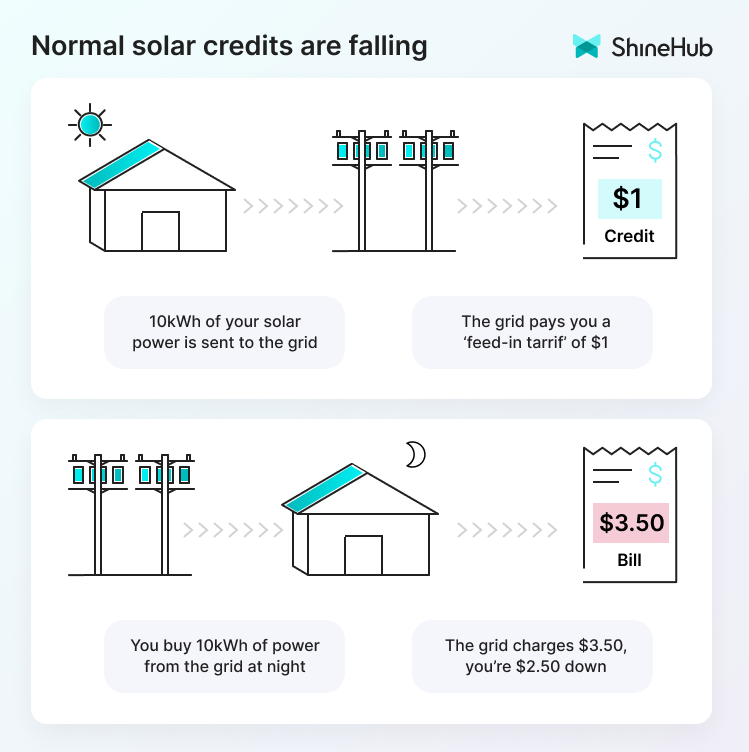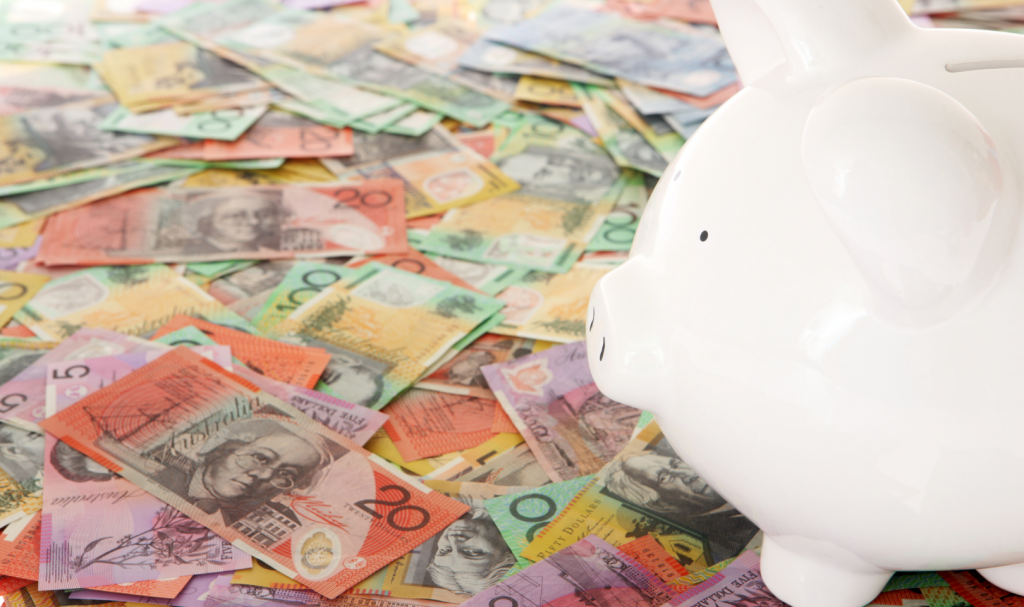Learn why you would get a solar battery, what you can save, and whether it’s worth it for you.
Batteries, they are all the buzz right now. The general narrative doing the rounds is that ‘batteries are great, but they are too expensive’. If this rings a bell, chances are you’ve heard it from your hairdresser, next door neighbour or your know-it-all uncle!
In this blog we’ll deal with the battery facts – why you would get one, whether it’s worth it, and what you could potentially save.
Batteries – why bother?
Scenario 1: You only have solar panels
When the sun is shining, your house is powered by solar. This is great if you happen be home to use it. But, if you’re at work for most of the day all that precious power is getting sent straight back the grid – you’re not using it and you have no place to store it. In return, the grid will provide you with a credit called the ‘solar feed in tariff’. But, typical of the big energy companies, this rate has been dramatically slashed over the years.

Here’s an example:
- You send 10kWh of solar power into the grid during the day.
- The feed in tariff is $0.10/kWh. 10kWh * $0.10/kWh = total feed in tariff bill credit of $1.00
- You then buy 10kWh of grid power at night.
- The grid power is $0.35/kWh. 10kWh * $0.35/kWh = $3.50 (total cost of grid power)
- In summary
- You lose $2.50/day every time this happens
Scenario 2: Solar panels with a battery
When you add a battery to your system, all that precious solar power generated during the day is stored and waiting for you when you get home. Turn the aircon on, run the dishwasher, buy some extra Christmas lights this year – you’ve got a battery full of sunshine waiting to be used! If you get a little overzealous and use it all up, don’t worry, the grid is still there as a back-up. But generally, you will be fairly energy self-sufficient by having panels and a battery.
Using the same electricity rates as above, adding a battery gives you extra savings of around $2.50/day ($230/qtr). Every electricity rate is unique, so treat this as a guide. Our consultants can give you a more accurate estimate based on your electricity plan and home energy usage.
But, the moral of the story is it’s best to use and store your own solar power – if you hand it over to the grid, rest assured they will sell it back to you at a much higher rate.
Not across our Virtual Power Plant Offer? Here’s what it’s all about:
By joining our virtual power plant, you’re basically telling the grid ‘you can take some power from my battery when you need it, in times of peak demand’. In return, you earn extra credits on your electricity bill!
The credit you will receive on your bill will be somewhere between $0.37/kWh and $7.04/kWh. Most importantly, ShineHub’s virtual power plant guarantees that the payment you receive is always higher than the price of grid electricity (on the virtual power plant plan, grid electricity is around $0.35/kWh depending on the rate you are on). This is important to note because not all virtual power plants provide this guarantee – you could in fact be worse off under other schemes.
The estimated yearly benefit for a 10kWh battery on the virtual power plant is around $300/year. Energy prices are different in every state. The examples we have used above are based on the South Australia virtual power plant offer that we recently released.
By drawing small amounts of power from lots of different batteries in the community, the grid gets the extra power it needs during peak times, without need to burn more fossil fuels. It’s a total win-win.
Want to find out more?
For more details on being a part of our virtual power plant, read this blog post.
For a free consultation with one of our solar experts click here.

